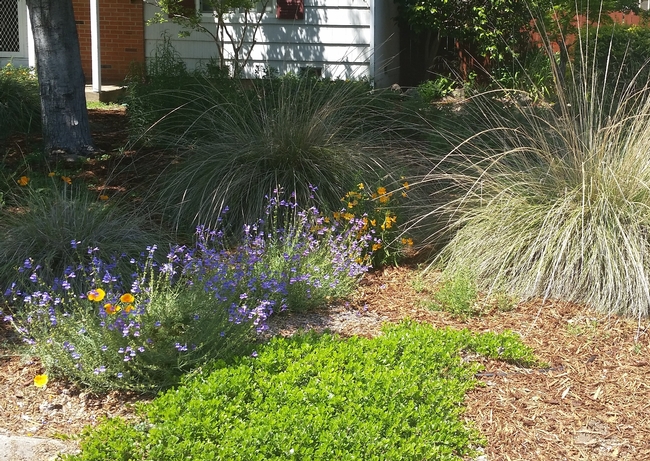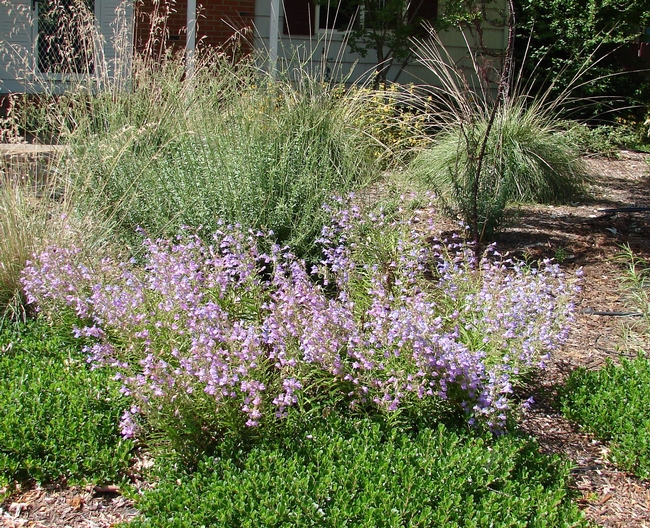By Cindy Weiner, Butte County Master Gardener, September 25, 2015

Water the plant every 3 to 4 days for the first month after planting. Let the ground dry out a bit between waterings. Dig down a few inches to check if the soil is still moist. If it is, wait another day or two and check again. After a month, switch to irrigating once a week and continue this schedule through the first spring and summer, discontinuing when the next rainy season begins. You can also mist the plants with water occasionally to wash dust from the leaves. During the second spring and summer, switch to a schedule of irrigating once every two weeks or once a month.
After the second summer, most natives will be fully established. Those natives that are fully drought tolerant will no longer need supplemental irrigation except during dry winters. Others will continue to need supplemental irrigation. You'll need to research the cultural requirements of your native plants in order to decide whether to continue irrigation. Consider where the plant grows naturally. If the plant is native to coastal fog belts, mountain forests or riparian zones, it will require extra water during summer and fall. If it's native to the Central Valley or Sierra or inland coastal range foothills, it's probably drought tolerant.

Getting your native garden off to a good start will help make your garden sustainable for the long term.